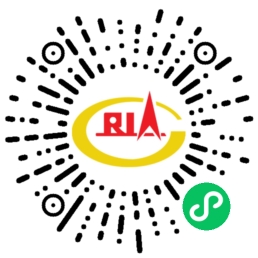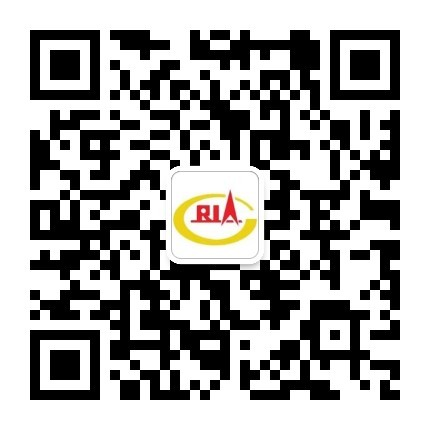◎ Gao Bo
| According to the statistical data from 47 member enterprises, the CRIA Rubber Chemicals Specialty Committee analyzed the production and operation conditions of the rubber chemicals industry in 2019 (the data in this article are all statistics from the Association). |
I. Economic Operation Condition of the Industry
The total output of rubber chemicals in 2019 was 1.231 million tons, with an increase of 5.0% year-on-year (the same below), ensuring stable supply of the industry, but in some periods, some products experienced a bad condition where supply exceeded demand. The total sales revenue was 24.3 Billion Yuan, with a decrease of 4.4%, mainly resulting from oversupply and difficulties to raise prices due to continued decline in upstream raw materials. The total industrial output value was 24.9 Billion Yuan, slightly larger than the total sales revenue, and continued to maintain a certain inventory. The export volume increased by 8.1%, and the export rate (volume) rose to 27.2%, returning to the level in 2017. However, the export value fell by 11.0%, and the export rate (value) fell to 28.1%. Domestic sales prices have always been running at a low level, which affected overseas customers, and key industry enterprises must pay attention to that.
The monthly production and sales conditions of rubber chemicals in 2019 are shown in Graphs 1-4.

Graph 1: Comparison of Monthly Output of Rubber Chemicals (Unit: ton)

Graph 2: Comparison of Monthly Sales Revenue of Rubber Chemicals (Unit: Ten Thousand Yuan)

Graph 3: Monthly Growth Trends of Rubber Chemicals Production and Sales

Graph 4: Monthly Average Price Changes of Rubber Chemicals from 2017 to 2019 (Unit: Ten Thousand Yuan/ton)
It can be seen from Graphs 1 to 4 that the average price of rubber chemicals fluctuates with fluctuations of monthly output. In June 2019, the output was close to 120,000 tons, and the average price from March to June dropped from 18,600 Yuan (per ton, the same below) all the way to 15,700 Yuan. In order to “stabilize benefits”, key enterprises actively controlled production capacity. Monthly output decreased from 117,000 tons to 108,000 tons and 93,000 tons in descending order, and the average price stopped falling and rose to 168,000 Yuan. However, under the interference of various factors inside and outside the industry, the output increased rapidly again in September and October, forming a huge V-shape, and the monthly average price also accordingly fell to 14,500 Yuan, the lowest in three years. See Graphs 5 to 6 for details.

Graph 5: Fluctuations of Monthly Output of Rubber Chemicals (Unit: ton)

Graph 6: Monthly Average Price Fluctuation Trend of Rubber Chemicals (Unit: Ten Thousand Yuan/ton)
From the data point of view, the effective production capacity of the industry was still far greater than market demand. Coupled with the lack of means to regulate output, it appeared unfavorable situations such as oversupply, continued downward prices, etc. In general, it was in a slump in 2019 for the industry as a whole, and especially the price fell sharply.
For this reason, since August 2019, CRIA Rubber Chemicals Specialty Committee has continuously reminded enterprises, “Under the general trend of weak macroeconomics, structural adjustment is the main task for enterprises at the moment, and all investment should be focused on technological innovation, energy conservation, consumption reduction and green factories, rather than continuing to expand production capacity and competing at low prices.” Its purpose is to strive to promote the healthy and sustainable development of the industry.

Graph 7: Annual Growth Trend of Total Output of Rubber Chemicals (Unit: ten thousand ton)
It is shown in Graph 7 the annual growth trend of total statistical output of member enterprises. From 2003 to 2014, it was a period of rapid growth for the rubber chemicals industry. Fluctuations began in 2015, but the overall trend still showed an increase, only with shrunken growth rate, entering a small growth stage. This matches the development trend of China’s automobile and tire industries.

Graph 8: Changes in Average Prices of Rubber Chemicals from 2010 to 2019
In Graph 8, it clearly reflects the overall situation of the development of rubber chemicals. Before 2005, it was a stage of development for China’s rubber chemicals industry to grow from small to large, where demand exceeding supply is the characteristic of this period. With the development of national economy, the price of rubber chemicals rose simultaneously. After 2005, the supply and demand relationship of rubber chemicals market began to tilt, a market pattern of oversupply gradually appeared, and the price gradually declined. Beginning in the second half of 2016, with the promulgation and implementation of China’s new environmental protection law, under the huge impact of environmental protection wave, the operating rate of rubber chemicals industry in 2017 fell sharply, and there was a short-term supply shortage at one time. In addition, the raw materials of rubber chemicals were also affected by the tide of environmental protection. Some rubber chemicals had a tight supply situation, leading to the rational return of prices. In the second half of 2018, the environmental protection level of key industry enterprises reached the national level of environmental protection emissions, and the effective output was close to the designed output, which began to exceed the market demand. In 2019, the oversupply phenomenon gradually became prominent, and the monthly output showed a large V shape from June to October. As a result, the annual average price fell.
According to the statistics of the outputs of 47 members, the industry concentration continued to be enhanced slightly. In terms of sales revenue in 2019, the top ten enterprises accounted for 67.4% of the industry, with a slight increase of 0.6%; and the top 20 enterprises accounted for 84.6%, the same as the previous year. In terms of output, the top ten enterprises accounted for 64.5% of the industry, with an increase of 3.4%; and the top 20 enterprises accounted for 81.2%, with an increase of 1.2%.
In 2019, the per capita sales income of the industry reached 1.49 Million Yuan, with a decrease of 4.7%, mainly resulting from price decline. Among them, that of the top ten enterprises was 1.772 Million Yuan, which was 18.9% higher than that of the entire industry, indicating that the automation and enterprise lean management of the industry has improved year by year. The enterprise with the highest per capita sales income is Red Avenue New Materials Group Co., Ltd., with a total of 4.189 Million Yuan. Enterprises with per capita sales income over 2 Million Yuan include Nanjing Shuguang Chemical Group Co., Ltd., Nanjing Chemical Industries Co., Ltd., Ningbo Actmix Rubber Chemicals Co., Ltd., Henan Kailun Chemical Co., Ltd., etc. From the analysis of industry concentration and per capita sales income, the top ten enterprises were significantly better than the entire industry.
II. Specific Analysis of Classified Products
There are five main types of rubber chemicals, together with pre-dispersed rubber chemicals.
1. Accelerators
The output of accelerators in 2019 was 356,000 tons, with a decrease of 0.3%, which was obviously due to the balance between market demand and production capacity control. Among them, the accelerator output of four key enterprises reached 209,000 tons, accounting for 58.7% of total accelerator output, including Shandong Sunsine Chemical Holdings Ltd., Kemai Chemical Co., Ltd., Willing New Materials Technology Co., Ltd., and Shandong Yanggu Huatai Chemical Co., Ltd. Other manufacturers of accelerators include Rongcheng Chemical General Factory Co., Ltd., Hebi Uhoo Rubber Chemicals Co., Ltd., Hebi Shuangli Rubber and Plastic Co., Ltd., Jincheng Tiancheng Sci-Tech Co., Ltd., etc.
2. Antioxidants
The antioxidant output in 2019 was 372,000 tons, with an increase of 1.9%. The output of mainstream antioxidants 6PPD and TMQ totaled 332,000 tons, accounting for 89.2% of the total output of antioxidants, with an increase of 3.4 percentage points over the previous year. Among them, there are six backbone enterprises together with an output accounting for 84.1% of the total output, including Sennics Co., Ltd., Shandong Sunsine Chemical Co., Ltd., Kemai Chemical Co., Ltd., Sinopec Nanjing Chemical Industries Co., Ltd., Shandong Stair Chemical & Technology Co., Ltd. and Yuncheng Jinteng Chemical Technology Co., Ltd. The main production enterprise of 6PPD, Sennics, had an output of 132,000 tons in 2019 with its production and sales volumes ranking first in China. The top three in TMQs are Kemai Chemical, Sinopec Nanjing Company, and Shandong Stair. Other antioxidant manufacturers include Jiangsu Feiya Chemical Industry Co., Ltd., which mainly produces diphenylamine and phenolic antioxidants, and Yixing City Poly Jinxin Chemical Co., Ltd., which mainly produces antioxidant DTPD (3100), with an annual production capacity of 3,000 tons.
3. Processing additives
The output of processing additives reached 263,000 tons in 2019, with an increase of 13.9%. There were three enterprises with annual production capacity of more than 20,000 tons: Red Avenue New Materials Group Co., Ltd., Yanggu Huatai Chemical Co., Ltd. and Wuhan Jinghe Chemical Co., Ltd. The output of these three accounted for 57.4% of the total output of processing additives. Among them, the production of anti-scorching agent was 26,000 tons, led by Shandong Yanggu Huatai, accounting for 64.2% of the total domestic output, and continuing to maintain the world’s Number One. Other enterprises producing processing additives include Shanghai Cheeshine Chemicals Co., Ltd., Qingdao Fihonor Chemical Science & Technology Co., Ltd., Lianyungang Rebo Chemical Co., Ltd., etc.
4. Vulcanizing agents and peroxides
In 2019, the output of vulcanizing agents and peroxides reached 134,000 tons, with an increase of 11.7%; of which the output of insoluble sulfur was 104,000 tons, with an increase of 11.8%.
Shandong Sunsine Chemical had an annual output of 35,000 tons of insoluble sulfur with high thermal stability, and the capacity was released about 85.7%. Shandong Yanggu Huatai had an annual production capacity of 43,000 tons, and the capacity was released 57.0%. Other major manufacturers of insoluble sulfur include Wuxi Huasheng Rubber Technical Co., Ltd., Henan Kailun Chemical Co., Ltd., Willing New Materials Co., Ltd., Sennics Co., Ltd., Jiangsu Hongtai Chemical Co., Ltd., Zhongxinhuacheng Petrochemical Co., Ltd., which is expected to put into production in the first half of 2020, etc.
The annual production of insoluble sulfur in China has exceeded 100,000 tons. According to enterprise investment plans, China’s insoluble sulfur production capacity will exceed 260,000 tons by 2022, which will cause a serious oversupply situation.
The main manufacturer of organic peroxides was Jiangsu Qiangsheng Chemical Co., Ltd., with an annual production capacity of 30,000 tons.
5. Special functional additives
The output of special functional additives in 2019 was 106,000 tons, with an increase of 7.1%. The main enterprise producing silane coupling agents is Nanjing Shuguang Fine Chemical Co., Ltd. Main manufacturers of cobalt salt adhesives are Jiangyin Sanliang Rubber & Plastic New Materials Co., Ltd. and Jiangsu Kaou Chemical Co., Ltd., etc. Other adhesive manufacturers also include Changzhou Shuguang Chemical Factory, Jiangsu Guoli Chemical Technology Co., Ltd., Wuxi Huasheng Rubber Technical Co., Ltd., etc.
6. Pre-dispersed rubber chemicals
The output of pre-dispersed rubber chemicals in 2019 was about 62,000 tons, with an increase of 106.7%. The doubling of output indicates that this chemical form has been more and more accepted by downstream rubber products enterprises, and it has a good prospect in the future. The enterprises with larger production capacity are Ningbo Actmix Rubber Chemicals Co., Ltd., Shandong Yanggu Huatai Chemical Co., Ltd., Zhuhai Kemao New Material Technology Co., Ltd., Kunshan Atman New Material Technology Co., Ltd., Dongguan First Rubber & Plastic Technology Co., Ltd., Zhongshan City Hanxin Rubber Material Factory, Jiaxing Beihua Polymer Additives Co., Ltd. etc.
III. Forecast for 2020
The year of 2020 is the last year of the “Thirteenth Five-Year Plan”. The biggest difficulty in rubber chemicals industry should be “stabile benefits.” On the premise of maintaining the current status of environmental protection supervision standards, with the improvement of the environmental protection level of enterprises, the effective production capacity has exceeded the market demand, which has affected the “stable benefits” of the industry. Of course, environmental protection and safety are still two lifelines that enterprises cannot relax. The “Blue Sky Defense War” carried out by the Ministry of the Environment is still underway. New environmental standards such as VOCs may be introduced one after another. Environmental protection is still the biggest uncertainty factor in rubber chemicals industry.
According to the development trend of China’s auto industry and rubber products industries like tires, as well as the impact of the pandemic breaking out since the Spring Festival, the total output of rubber chemicals is expected to be about 1.26 million tons in 2020, with an increase of about 2.4%.




